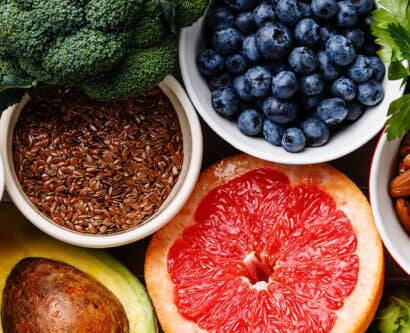School Food Standards: Free Checklist
School meals are an important part of a child’s diet. 5 days a week, this is where children need to be provided with a healthy and balanced meal. In children, a nutritious and balanced diet is important as it supports healthy growth and brain development. It also boosts immunity, strengthens bones and helps the digestive system function properly – amongst a huge array of other benefits.
It is clear to see that children should follow a healthy and balanced diet, and school meals are no exception here. Anyone who is involved in catering for pupils has a responsibility to follow school meal standards, along with other legislation to ensure healthy and nutritious food is provided.
In this article we will outline the regulations and legislation for schools to be aware of, explain why it is so important to provide children with healthy meals, and provide guidance on how you can meet the standards in your school alongside offering a downloadable school meal standards checklist for you to use.

What are the School Food Standards?
As of January 2015, all maintained schools, new academies, and free schools are required to follow the standards of the School Food Plan. It was launched by the Department of Education and in line with the requirements for School Food Regulations 2014. The School Food Plan is a set of standards for all food served in schools and has been designed to make it easier for school cooks to create imaginative, flexible, and nutritious menus.
The Plan highlights the importance of variety within your menus, e.g. using different fruit and vegetables, a range of grains and pulses, and a variety of meats and fish. The Plan also raises awareness of how much children love to hear the stories behind their food. This means that schools should look to use fresh, sustainable, and local ingredients and use these factors to educate children about what they are eating.
The School Food Plan advises that lunches should be made up of:
- One or more portions of starchy food each day, with at least one whole grain variety each week.
- One or more portions of veg or salad and fruit every day, plus a dessert with at least 50% fruit twice or more a week.
- A portion of dairy every day, with lower fat milk available for drinking.
- A portion of meat, fish, eggs, beans or non-dairy protein every day, with meat or poultry on at least three days a week and oily fish once or more every three weeks.
- No more than two portions of deep-fried, battered or bread-crumbed food each week, and no more than two portions of pastry each week.
- Nuts, seeds, veg, and fruit with no added salt, sugar or fat as snacks.
- No confectionery or chocolate.
- Plain water, lower fat milk, fruit juice, tea, coffee, and hot chocolate drinks.

Governing bodies are able to decide the form that school lunches take, but must ensure that the lunches and other food and drink provided meets the school food standards. It should also be noted that many of the food-based standards apply to food served throughout the school day, including breakfast, midmorning break and afterschool clubs. This also includes food from vending machines and tuck shops. It should also be noted that you must follow the regulations of the Government Buying Standards for Food and Catering Services when creating your menus. It is the responsibility of the school to create their own menus for pupils. In doing so you must ensure that you are cooking healthy food and providing varied menus – here think about the diversity within schools, you must be catering for the different types of dietary, religious, cultural and medicinal needs including allergies.
Allergies
Food allergies or intolerances need to be taken seriously. Schools and caterers must work closely with parents or carers to support children with medical needs, allergies or intolerances. Under section 100 of the Children and Families Act 2014, schools have a duty to support pupils at their school with medical conditions. This includes any allergies or intolerances.

The Food Information Regulations 2014 states that all food businesses must show the allergen ingredients’ information for all food served – this included school caterers. In doing so, schools can more easily identify the food that pupils with allergies can or cannot eat. Furthermore, as of October 2021 the Food Information Regulations now include new requirements for the labelling of allergens on prepacked for direct sale (PPDS) foods under Natasha’s Law. PPDS foods are ones packaged on the premises before they are ordered to eat, such as sandwiches. To find out more on Natasha’s Law and how you may be affected – check out our article.
Sustainability
Sustainability is also something to consider in the planning of school menus. Whilst the nutrition and health of the children should take priority, it is important to engage in sustainable food practices such as:
- Plot to plate eating, which essentially calls for as much produce as possible to be home grown and harvested. You could try implementing a school garden where pupils help grow the produce they eat.
- If home growing is not an option, try to source produce as locally as possible.
- Incorporating lots of plant-based produce, as this often requires less energy from fossil fuels, less land and less water than meat.
- Where meat is used, sourcing it ethically and sustainably. This means ensuring a high quality of animal welfare and sustainable practices by farmers.
- Furthermore, when using meat, encourage a nose-to-tail attitude which sets out to use as much of the animal as possible, in as many ways as possible, so little goes to waste.
- A ‘whole school approach’ whereby pupils are not only taught about health and nutrition, but also the sustainable ways in which a healthy diet can be achieved.
Why is it Important for Schools to Provide Healthy Food?
It is important that schools provide healthy food to pupils. School obviously is a place of learning, and this reach stretches beyond just that of the classroom. There is much for children to learn about the importance of healthy eating and the benefits it has. Schools can play an important role in shaping lifelong healthy eating habits.
Research reported by the Independent claimed that British adults admit to not having a balanced diet as they are bad with portion sizing, understanding food groups and nutritional information. Half of the 200 adults questioned said they had “no idea” how much protein, fat, carbohydrates, sugar, dairy and fruit and vegetables they are supposed to eat.
- 49% said they didn’t have good knowledge on position sizes.
- 9 in 10 said their diet probably lacked balance.
- One third chose not to eat fruit in a typical week and 46% had no vegetables over the same period.

Such a report clearly outlines the need for people to have a far greater understanding of the food they should be eating and why. The key to this is teaching people from a young age of the importance of a healthy and balanced diet in the food they eat. This is an accomplishment yet to take success, with reports showing an all time high in childhood obesity. 20% of children aged 10-11 and nearly one tenth of 4-5 year olds were classified as obese in 2018/19. On top of this – a recorded £61.7m was spent by local authorities on childhood obesity in 2018/19, including the National Child Measurement Programme.
How Do I Implement the School Food Standards in My Setting?
A healthy diet is essential for children in order to support growth spurts and health as they move into adulthood.
Concentration and mood worsen if you go too long without eating or eat too much of the wrong food groups. Therefore, it’s important to ensure pupils’ meals are healthy and well-balanced. The brains of children need a regular supply of energy so that they can think properly. Furthermore, there is evidence that eating breakfast leads to better learning, compared to not having breakfast. It may also be helpful to eat food that is digested more slowly so that the supply of energy lasts until the next meal or snack. This means that meals including fibre may be particularly good for the brain.
There are a number of ways that you can help to implement food standards into your school – namely following the Eatwell Guide, establishing healthier recipes, adjusting portion sizes, using alternative cooking methods and ensuring that you are catering for allergens and intolerances.
Following the Eatwell Guide

The Eatwell Guide, provided by the Department of Health, is a pictorial example of how to meet your nutritional needs.The Guide shows the proportions in which different types of foods are required in order to have a well-balanced diet, it delivers two key messages: proportion matters and variety counts.
- Based on the Eatwell Guide, fruit and vegetables should make up just over a third of what we consume each day. You should aim for 5 varied portions per day.
- Starchy foods should also make up just over a third of the food you eat each day. Opt for whole grain versions for extra fibre boosts.
- Dairy and alternatives are an essential part of your daily diet, they are a good source of protein, vitamins and calcium – all of which are essential for children.
- The Eatwell Guide recommends that we only consume a very small amount of fat each day, so oils and spreads only make up a small part of the chart.
- Protein is an important part of a diet, meat and fish are good sources as well as beans, pulses and eggs.
- Foods high in fat, salt and sugar should be avoided in school meals.
The Eatwell Guide makes healthy eating easier to understand by giving a visual representation of the types of foods and drinks we should consume and in what proportions to have a healthy, balanced diet.
Healthier Recipes
Try to use recipes that have lower fat, salt and sugar content. Foods high in these such as pastries, cakes, biscuits, sweets and full-sugar soft drinks, are non-essential to the diet. For this reason, they should be eaten infrequently and in small amounts. These types of foods are shown separately to the Eatwell Guide’s main guidance to demonstrate that they are non-essential. Always check food labels carefully, particularly with processed foods, to look for hidden fats and sugars which may inadvertently be adding calories to the school meal.
Therefore, when deciding on the recipes for your pupils, you should try your best to avoid foods high in fat, salt and sugar.
Also watch out for sugary drinks – try to encourage water as the primary drink choice. Instead of water, you can offer:
- 150ml of fruit juice or smoothies a day.
- 150-200ml milk a day.
- 300ml a day of combination drinks such as fruit juice and water or flavoured milk.
To find out more on nutrition, you can take our Nutrition and Healthy Eating Course.

Adjusting Portion Sizes
The ingredients are not the only thing that matters when deciding meals and recipes for pupils, portion sizing is something to also pay attention to as it can be the difference between a nutritious and balanced meal and an unhealthy one. For example a little fat in the diet is good, but too much can raise cholesterol levels.Whilst starchy carbohydrates are an essential part of a diet, they are often high in calories and should only make up just over a third of the plate.
Using Alternative Cooking Methods
Shallow and deep frying foods imparts a lot of unnecessary fat into the diet. Instead try to make use of other, healthier cooking methods such as:
- Roasting.
- Steaming.
- Boiling.
- Sous vide.
- Air frying.
- Slow cooking.

Catering for Allergens and Intolerances
As we have mentioned, allergies and intolerances must be taken seriously. No matter the food you provide for your pupils, you must ensure that you are catering to all your pupils’ dietary needs – including those with allergies and intolerances. For example, if you are substituting food products for healthier options, it’s vital to ensure you can continue to meet any special dietary needs.
Free School Food Standards Checklist
Eating food you enjoy is especially important in maintaining a healthy diet because if you aren’t cooking food that you enjoy, then chances are you won’t eat it again. This is even more true in regards to children and adolescents and if the healthier options are presented in an unappealing way – bland and flavourless – then they will not take interest in eating them anymore.
We have created a free checklist for you to download and use so that you can ensure you are creating healthy and nutritionally balanced meals for your pupils. The checklist to help you create your menus. By following this and making sure the food groups are covered in appropriate measures, you can more easily guarantee healthy and nutritionally balanced.
We hope you found this article to be a useful insight into school food standards, and that you utilise the free checklist provided to ensure healthy and nutritionally balanced meals for your pupils. For any more information feel free to get in touch. High Speed Training offers a wide variety of courses and resources that can help.
Further Resources:
- Online Food Hygiene Training Courses
- What are the Food Hygiene Requirements in a School?
- What is a School Breakfast Club?
- How to Spot Allergy Bullying











